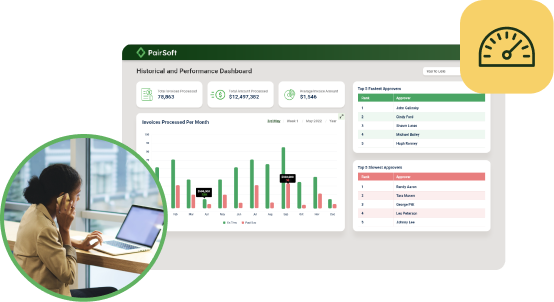Today, we’re entering the next tipping point of workplace transformation — automation.
Backed by technologies like artificial intelligence (AI), automation appears poised to have a transformative impact on every industry and organization. Increasingly, it’s being applied to jobs that involve lots of repetitive and so-called info-wrangling tasks (e.g., processing requests, compiling reports, entering and collecting data entry, and updating databases). This automation is happening for a good reason; these types of tasks account for a large portion of the average workday. According to Smartsheet’s Automation survey, 40% of workers spend more than a quarter of the work week on manual, repetitive tasks.
When these automated solutions are applied throughout the entire company, they make the employees and company as a whole more efficient and profitable.
Below are a few ways in which automation is creating more efficiencies for employees in their everyday work.
Onboarding
HR departments have worked diligently to improve their onboarding processes over the years; many of us have seen it (and helped companies with it) first hand. With so many different learning styles, performance speeds, and job intricacies, onboarding will never be perfect. But, with AI, we’re getting much closer to perfection.
AI and other advanced algorithms can help create custom learning plans for each individual employee. Onboarding programs can take an individual through the onboarding process step-by-step, so no job task or requirement, no matter how small, is forgotten. They can aid in determining a path for professional development using the employee’s existing proficiencies, knowledge base, interests, and skills gaps to build an onboarding and professional development program that helps the individual grow their skillset and efficiency. In turn, the company could see returns faster.
Through the use of cloud-based human capital management systems, companies can collect and analyze various data about a specific employee. This data can predict the level of engagement an employee will need and help analysts make individual suggestions based on specific factors to create the best possible experience.
Organization
When it comes to employee efficiencies and engagements, organization is key on many fronts. When there is a consistent process across your business, the room for error decreases and the likelihood of success increases.
Automation tools maintain and transfer information seamlessly. Data is stored in secure places where it can’t be lost or destroyed. When information is transferred through software, there’s no element of human error on the user end. For instance, let’s say you sell products online through an ecommerce store. Instead of putting someone in charge of collecting online orders and manually typing shipping labels, an automated tool can perform that task for you. A shipping feature can be integrated with the shopping cart to supply your shipping department with the information they need. In this case, the information is delivered accurately and to the right department without the involvement of a person. There are no delays because the order-processor was out to lunch or went home sick. Furthermore, automation helps maintain the integrity of information. By centralizing your data, it’s easy for anyone in your company to easily look up information.
Collaboration
With organization of information and a central location of documents being so important, companies like PairSoft are helping businesses not only improve their overall organization strategy, but also their cross-company collaboration. By allowing employees to access that information at any time and location, collaboration increases, along with the overall efficiency of the team.
The knowledge economy is robust. Many jobs can be done from anywhere. Technology has allowed us to turn anywhere with a Wifi connection into an impromptu office. By investing in a centralized and autonomous database, you allow employees to work from wherever they will be most comfortable.
With the simple access to information and one central location, employees now have version of the truth that is updated in real-time. They are able to collaborate and communicate seamlessly, and automation is helping to make that communication more efficient as well.
Although communication tools such as email, instant messaging applications, and team collaboration software have their uses, information often gets lost in the shuffle. Sifting through messages and status updates across multiple platforms is not only a tedious process, but it also creates knowledge gaps.
Teams can’t quickly and effectively communicate changes to projects or processes when information is siloed. When there’s no single source of truth, it can be difficult to move work through the pipeline. Using a work-management platform that automates time-consuming, manual tasks makes a noticeable difference.
For example, instead of wasting time racing around the office gathering reports from stakeholders or sending status update emails, workers can set up automated update requests to gather the information they need to get projects done. Then, that information is consolidated in one place, for anyone on the project to reference.
Creating and fostering an efficient workplace is no easy feat, but automation can lead to phenomenal results, making the workplace (albeit a virtual one) a much happier and productive place to be.






